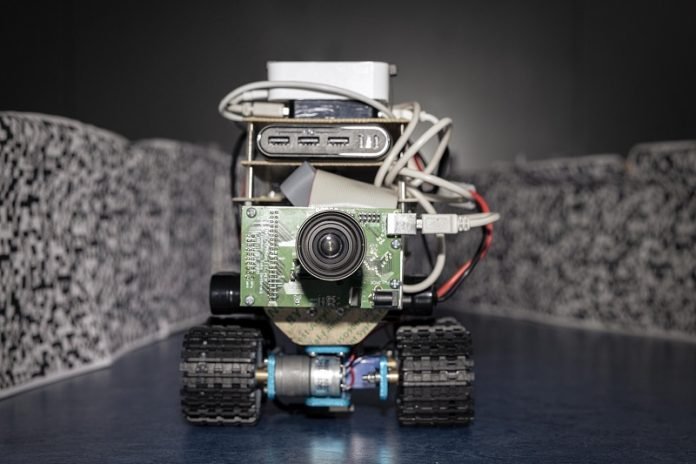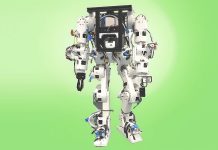
Have you ever marveled at how a tiny insect can effortlessly navigate through the air, dodging obstacles and squeezing through the smallest of gaps?
It’s a feat that’s long puzzled scientists, especially considering insects have brains no bigger than a pinhead.
Yet, they manage to perform complex navigational tasks with ease.
Now, a team led by physicist Elisabetta Chicca at the University of Groningen is on the verge of cracking this mystery with a groundbreaking development: a robot that navigates just like an insect.
Understanding how insects process what they see into actions is quite the puzzle. Imagine sitting on a train, watching the scenery rush by: nearby trees zip past quickly, while distant buildings seem to crawl.
This difference in apparent speed helps insects judge distances—a crucial skill for flying straight or maneuvering around obstacles.
However, insects face a challenge when it comes to turning. To keep their navigation simple enough for their small brains, they adopt a clever strategy: flying in a straight line, turning, then continuing in another straight line.
This insight is invaluable, suggesting that simplifying problems based on available resources can be an effective strategy.
Under Chicca’s guidance, Ph.D. student Thorben Schoepe crafted a model mimicking the neural activity of insects and built a robot that uses this model to move around.
This project, a collaboration with neurobiologist Martin Egelhaaf, aimed to uncover the neural mechanisms insects use to navigate.
The robot, designed to follow the principle of moving towards areas with the least apparent motion, was tested in a corridor setup with walls decorated with random patterns. Just like insects, the robot managed to stay centered in the corridor, showcasing the model’s effectiveness.
The robot’s ability to navigate wasn’t just limited to corridors. In simulated environments filled with obstacles or tight spaces, it exhibited behavior strikingly similar to that of insects, proving the model’s versatility.
According to Chicca, the beauty of this result lies in its simplicity and efficiency, qualities often overlooked in robotics.
While much of robotics focuses on learning and adapting through machine learning, insects come equipped with innate abilities that allow for immediate, efficient action right from birth.
This efficiency, hardwired into their brains, offers a new perspective on how to approach robotics and computing.
Chicca’s team has already made strides in this direction with the development of a chip smaller than a keyboard key, capable of mimicking some insect behaviors.
The ultimate goal is to integrate these insect-inspired mechanisms into a chip, paving the way for more compact, energy-efficient computing solutions.
This approach contrasts sharply with the prevailing trend towards general-purpose computers, suggesting a future where technology can perform tasks with the precision and efficiency of an insect’s brain.
This research, published in Nature Communications, doesn’t just shed light on the marvels of insect navigation.
It offers a glimpse into a future where technology can be both incredibly efficient and remarkably compact, inspired by the natural world’s simplest creatures.



